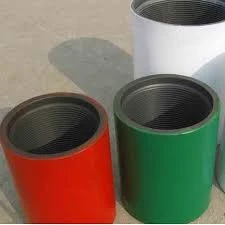- Afrikaans
- Albanian
- Amharic
- Arabic
- Armenian
- Azerbaijani
- Basque
- Belarusian
- Bengali
- Bosnian
- Bulgarian
- Catalan
- Cebuano
- Corsican
- Croatian
- Czech
- Danish
- Dutch
- English
- Esperanto
- Estonian
- Finnish
- French
- Frisian
- Galician
- Georgian
- German
- Greek
- Gujarati
- Haitian Creole
- hausa
- hawaiian
- Hebrew
- Hindi
- Miao
- Hungarian
- Icelandic
- igbo
- Indonesian
- irish
- Italian
- Japanese
- Javanese
- Kannada
- kazakh
- Khmer
- Rwandese
- Korean
- Kurdish
- Kyrgyz
- Lao
- Latin
- Latvian
- Lithuanian
- Luxembourgish
- Macedonian
- Malgashi
- Malay
- Malayalam
- Maltese
- Maori
- Marathi
- Mongolian
- Myanmar
- Nepali
- Norwegian
- Norwegian
- Occitan
- Pashto
- Persian
- Polish
- Portuguese
- Punjabi
- Romanian
- Russian
- Samoan
- Scottish Gaelic
- Serbian
- Sesotho
- Shona
- Sindhi
- Sinhala
- Slovak
- Slovenian
- Somali
- Spanish
- Sundanese
- Swahili
- Swedish
- Tagalog
- Tajik
- Tamil
- Tatar
- Telugu
- Thai
- Turkish
- Turkmen
- Ukrainian
- Urdu
- Uighur
- Uzbek
- Vietnamese
- Welsh
- Bantu
- Yiddish
- Yoruba
- Zulu
Understanding the Purpose and Structure of a Pup Joint in Pipe Systems
Understanding Pup Joints in the Oil and Gas Industry
In the oil and gas industry, the term pup joint refers to a short piece of pipe that is used to connect sections of tubulars, such as drill pipes or casing, in various applications. It plays a critical role in maintaining the integrity and functionality of drilling operations and well completions. Understanding pup joints is essential for engineers, drillers, and anyone involved in operations within this sector.
What is a Pup Joint?
Typically measuring between 1 to 10 feet in length, pup joints are utilized mainly to make fine adjustments in the total length of a string of pipe. They are produced in various sizes and materials, depending on the specific requirements of the operation. The most common materials used for pup joints include carbon steel and stainless steel, which provide the necessary strength and corrosion resistance.
Pup joints are designed to fit standard pipe connections. They can come in the same diameter as the main pipe sections, allowing for seamless integration. Standardized dimensions and threads make these joints highly versatile, enabling their use across different types of drilling and completion scenarios.
Applications of Pup Joints
Pup joints serve numerous purposes within the oil and gas sector, including
1. Length Adjustment Often utilized to adjust the overall length of the pipe string. This is particularly important during drilling operations where precise measurements are crucial for successful drilling depth and targeting specific geological formations.
2. Pressure Management Pup joints can help manage the pressure in the wellbore. They act as an extension, allowing operators to maintain the required pressure for optimal performance while drilling.
what is a pup joint

3. Connection of Equipment They also serve as connectors between various pieces of equipment and tools, such as downhole drilling motors, stabilizers, and other accessories.
4. Facilitating Inspection In some cases, pup joints allow for easier inspection and maintenance of pipeline integrity. By using these short sections, technicians can replace damaged sections without having to replace longer runs of pipe.
Manufacturing and Standards
The production of pup joints must adhere to strict industry standards and specifications to ensure their reliability and performance. Organizations such as the American Petroleum Institute (API) set regulations covering the manufacturing process, pressure ratings, and material specifications. These standards help guarantee that pup joints provide the necessary safety and functionality required in extreme environments encountered in drilling operations.
Installation and Best Practices
When installing pup joints, personnel must follow best practices to prevent issues such as leaks or failures during operations. Proper thread make-up, torque settings, and inspection protocols are critical components of a successful installation. Additionally, examining the condition of both the pup joint and the adjoining pipe is vital to ensure there are no signs of wear or damage that could lead to failure.
Conclusion
In conclusion, pup joints are a small yet crucial component of the oil and gas industry. Their role in connecting and adjusting lengths of pipe underscores their importance in drilling and completion operations. By adhering to manufacturing standards and best practices in installation, operators can ensure that these joints contribute to the efficiency and safety of their operations. As the industry continues to evolve and face new challenges, understanding the functionality and application of components like pup joints will remain essential for success.
-
Tubing Pup Joints: Essential Components for Oil and Gas OperationsNewsJul.10,2025
-
Pup Joints: Essential Components for Reliable Drilling OperationsNewsJul.10,2025
-
Pipe Couplings: Connecting Your World EfficientlyNewsJul.10,2025
-
Mastering Oilfield Operations with Quality Tubing and CasingNewsJul.10,2025
-
High-Quality Casing Couplings for Every NeedNewsJul.10,2025
-
Boost Your Drilling Efficiency with Premium Crossover Tools & Seating NipplesNewsJul.10,2025







